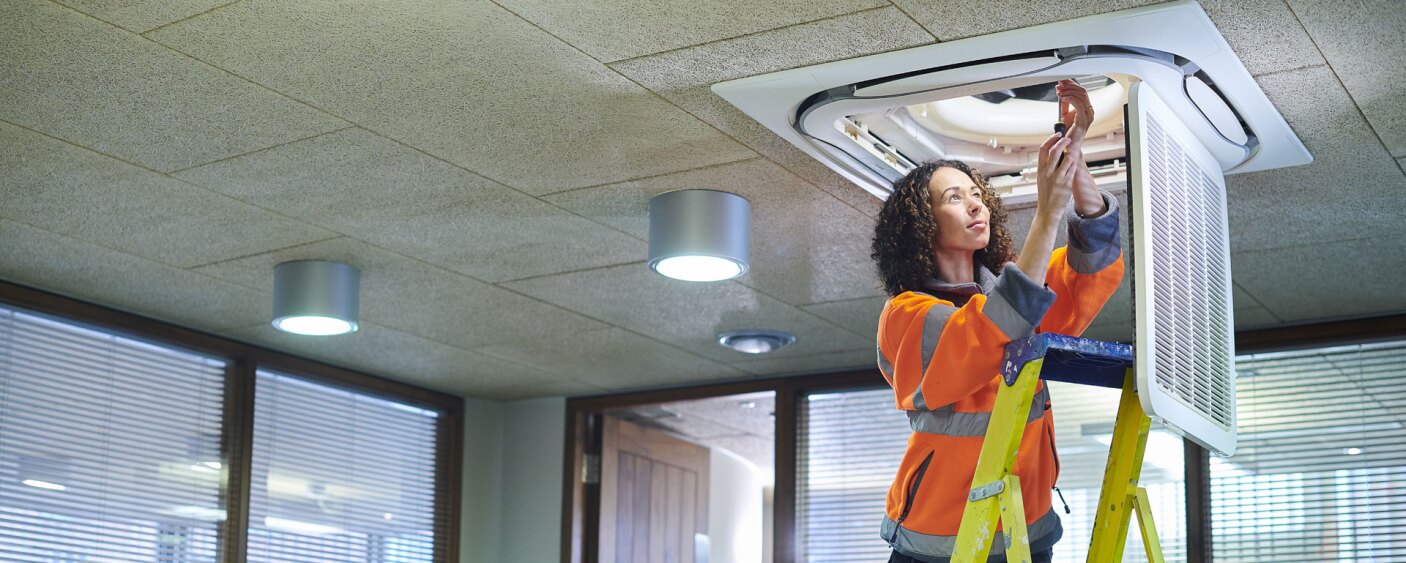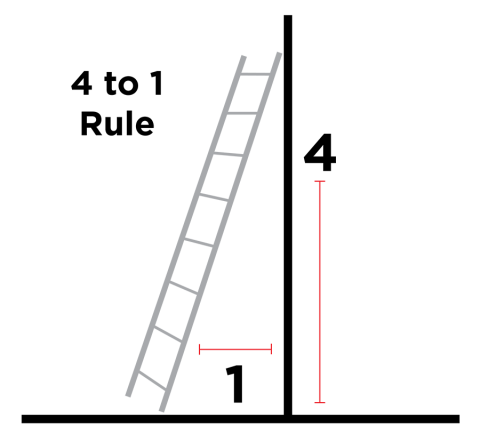Choose the right ladder for the job
When choosing a ladder, it’s important to think about the task you are trying to complete. Ensure you are using a tall enough ladder to avoid from using the top 3 feet of the ladder — it’s never a good idea to stand on the top rung or step, as you may lose your balance or have difficulties descending the ladder.
Before using the ladder
Before each use, it’s important to inspect the ladder to look for loose hinges, screws, or bolts. Also check for defects such as bent or damaged steps, side rails, or supports. Make sure the ladder is free of any debris such as grease, mud, or any other substance that may cause you to slip. Ensure the ladder is equipped with nonslip feet if you are not using a non-slip base mat.
Placing the ladder
Before using the ladder, consider its placement. The ladder should be on a level surface, and equipped with non-slip feet or a base mat. In high traffic areas, protect the base of the ladder with a barrier, such as cones. If there are any doors nearby, ensure those doors are locked or open away from the work zone. If you’re using a stepladder, ensure all its hinges are locked and the ladder is fully open before use.
If using a straight ladder, remember the 4:1 ratio. The 4:1 ratio means that for every 4 vertical feet, the base of the ladder needs to be 1 foot away from structure you are climbing. If climbing onto a roof or platform, the top of the ladder must be 3 feet above the surface and tied off at the top.
Using the ladder
Only use ladders for their intended purpose, and remember these guidelines while using a ladder:
- Do not lean outside the ladder rails
- Do not try to shift or move the ladder
- Do not step on the top rung or step of the ladder
- Keep three points of contact with the ladder at all times — one hand and two feet, or two hands and one foot
- Do not overload the ladder — follow the recommended load rating found on the manufacturer’s label
After using the ladder
When your job is complete, make sure to check the ladder again for any defects, debris, or damage so you can provide any maintenance that may be needed.
The information and recommendations contained in this material have been obtained from sources believed to be reliable. However, SECURA accepts no legal responsibility for the accuracy, sufficiency, or completeness of such information. Additional safety and health procedures may be required under particular circumstances. Please your SECURA Risk Management Consultant for more information.







